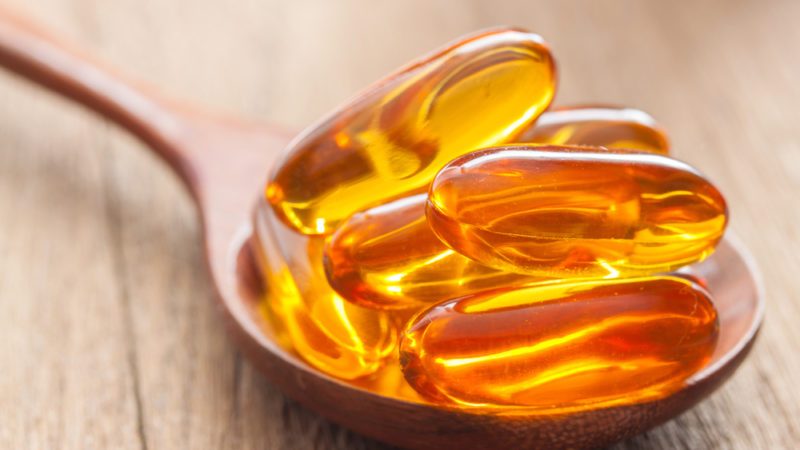
Vitamin D
Vitamin D is the vitamin known as the sun's vitamin . The main source of vitamin D is the sun 's exposure to the sun until the body produces the vitamin. By exposing the skin to ultraviolet light from the sun, it converts the cholesterol found in the skin through a series of vital processes. Vitamin D Exposing the hands and feet to the sun for five to ten minutes, two to three times a week is long enough to provide the body with its vitamin D requirement, as well as having limited amounts in certain foods .
Vitamin D and calcium Vitamin D increases the level of calcium in the blood by:
- Increased calcium absorption from the intestine.
- Reduce calcium loss through urine by increasing calcium reabsorption in the kidneys.
Here, it should be noted quickly that the lack of calcium in the blood stimulates the secretion of parathyroid glands of the hormone , which works to increase the level of calcium in the blood by analyzing calcium from the bones, and when the calcium in the blood, calcitonin, which is produced by The thyroid gland reduces blood calcium by increasing its sedimentation in the bones.
Vitamin D cycle in the human body
Vitamin D is one of the fat-soluble vitamins, so it is absorbed by the intestine with other fats when it is obtained from food.Vitamin D is also synthesized in the skin by direct exposure to the sun as follows:
- In the skin there is a substance called 7-Dehydrocholesterol.
- When the skin is exposed to ultraviolet light, the substance (7-dihydrocholesterol) turns into cholecalciferol. Cholecalciferol then travels through the bloodstream until it reaches the liver. The liver contains an enzyme (25-alpha hydroxylase), which stimulates the process of converting the substance (cholecalciferol) to (25-hydroxy cholecalciferol) .
- 25-hydroxy cholecalciferol is transferred to the kidneys.
- The kidneys contain an enzyme (1-alpha hydroxylase), which catalyzes the process of converting 25-hydroxy cholecalciferol into 1,25-dihydroxy cholecalciferol, which is called vitamin D3 or calcitriol.
The importance of vitamin D
Vitamin D, which is metabolized in the body, is called 1.25-dihydroxy cholecalciferol
Vitamin D is involved in many vital processes, including:
- Maintain healthy bones and teeth .
- Maintain the mineral balance of calcium and phosphorus in the body.
- Inhibiting the growth of cancer cells.
- Protect the body from various immune diseases .
- Minimize the occurrence of infections in the body.
- Enter into the processes of growth, division and differentiation of different cells of the body.
The body needs vitamin D
Recommended Dietary Allowances approved for vitamin D are adequate for maintaining healthy bones, teeth, and calcium metabolism in healthy people. This amount varies depending on age and is as follows:
- Infants from 0-12 months need 400 IU.
- Children from 1 to 60 years require 600 IU
Sources of vitamin D
There are very few foods that contain in nature vitamin D , fatty fish meat (such as salmon, tuna, mackerel), fish liver oils are the best sources, and there are small amounts of vitamin D in (liver, cheese Vitamin D can be obtained from fortified foods such as milk products, butter, and orange juice, provided that the nutritional information of these foods is supported by vitamin D. Vitamin D can be obtained from supplements , but should not be taken without consulting a doctor. As for exposure to sunlight, most people get a small amount of their vitamin D needs through exposure to the sun, for many reasons, including:
- Clothing can cover a large part of the body when exposed to direct sunlight.
- Use sunscreen.
Vitamin D deficiency and cancer risk
The low level of vitamin D in the body is closely related to cancer risk and mortality, because vitamin D performs many processes that may slow or prevent cancer. These include:
- Reduced growth of cancer cells.
- Stimulate apoptosis, a natural process that occurs to the cells of the body to maintain the integrity of the body and the vital processes that occur within it.
- Promoting the cellular differentiation of cells within the body, the process of differentiating cells into different types of specialized cells.
- Reducing the angiogenesis of cancer cells, the process by which cancer cells begin to spread through the release of food and energy to cancer cells through blood vessels.
Comments
Post a Comment